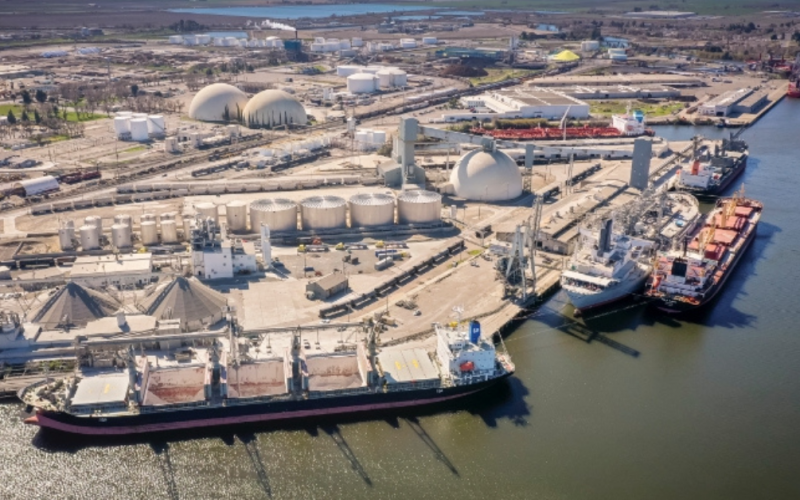The Port of Stockton is receiving a major boost to help shift its operations to zero-emissions.
Overall, California ports are receiving over $1 billion for zero-emission infrastructure from the U.S. Environmental Protection Agency.
The big picture: The port of Stockton is receiving $110.47 from the federal government.
- Stockton will use the money to transform the port into the first small port with zero-emission terminal operations and increase the zero-emission workforce in Northern California.
- Funding comes from the federal Clean Ports Program.
What they’re saying: “Thanks to historic support from the Biden-Harris Administration and our state’s Congressional leaders, California’s ports are undergoing a rapid transition to become zero-emission,” said California Gov. Gavin Newsom. “Cleaner ports means cleaner air for communities up and down our state – this is a huge win for our ports that are the backbone of the fifth largest economy in the world.”
Around the state: Here’s a look at how much the other ports across California are receiving from the EPA:
- Port of Los Angeles, $411.69 million: This project aims to accelerate the port’s transition toward zero-emission on-terminal operations by significantly reducing air pollution in and around the port, deploying zero-emission cargo handling equipment (CHE), and enhancing electric vehicle charging infrastructure.
- Port of Oakland, $322.17 million: This project will support the vision of reducing emissions and fully decarbonizing port activities by transitioning to zero-emission alternatives for drayage trucks and cargo handling equipment.
- Port of San Diego, $58.6 million: This project will support the port’s longstanding commitment to the electrification of San Diego’s maritime cargo handling facilities and freight transportation by implementing the final electrification elements to transform San Diego’s maritime cargo terminals and the goods movement network on San Diego Bay.
- Port of San Francisco, $55.39 million: This investment will transition ferry operations along the San Francisco waterfront to zero-emissions, removing 455,000 metric tons of carbon dioxide greenhouse gases and enhancing air quality at the Port of San Francisco and throughout the Bay Area airshed.
- Port of Hueneme, $42.29 million: The Port of Hueneme Reducing Emissions, Supporting Health (PHRESH) project consists of two components: PHRESH START (Sustainable, Thoughtful And Resilient Transformation), which includes planning activities, and PHRESH AIR (Accelerating Implementation and Results), which involves the deployment of roughly 35 pieces of zero-emission terminal equipment and a drayage truck incentive program.
- Port of Redwood City, $1.97 million: This project, in partnership with a private entity, includes climate and air quality planning for hydrogen-based fueling and infrastructure.











